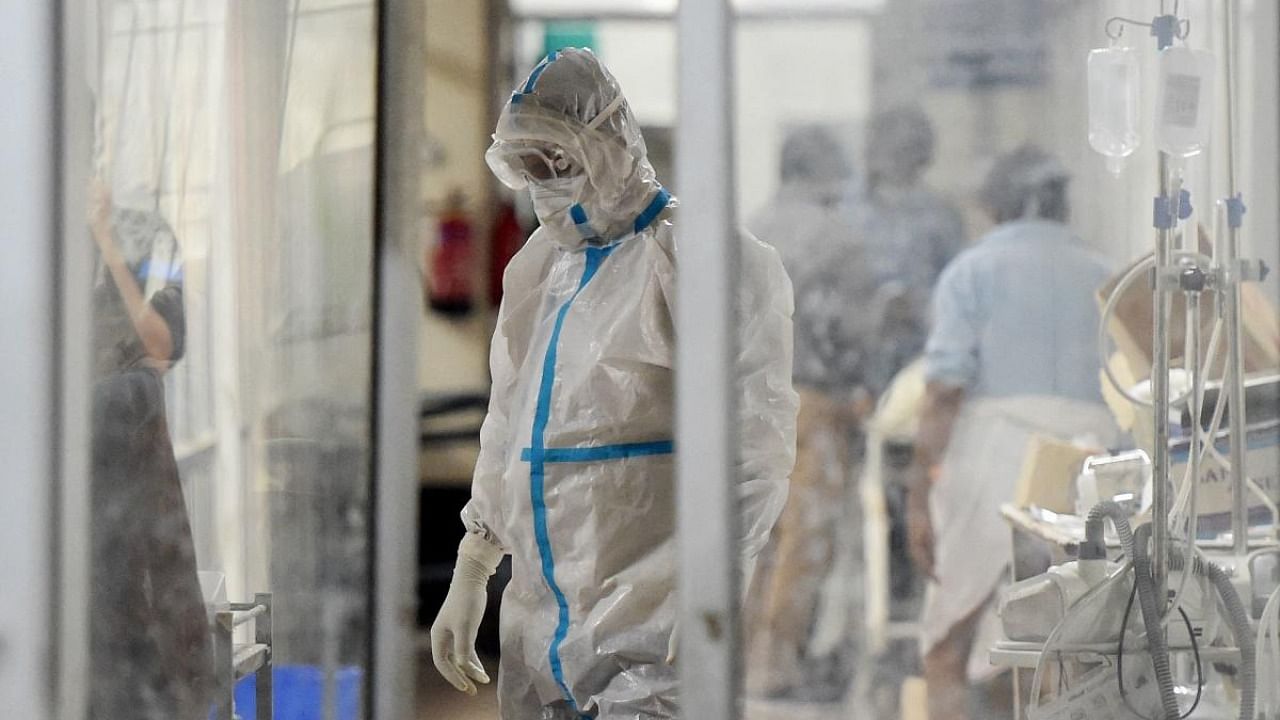
The good news is that the vaccines work against a new virus strain circulating in India that’s spread to several other countries.
The bad news is it won’t be only the new version of the pathogen to emerge from an outbreak of this scale, underscoring the urgency of mapping other possible variants that may be currently racing through India’s tightly-packed population of 1.4 billion people.
As infections surge by more than 300,000 cases for 15 straight days, pushing India’s tally past 21 million, the country’s limited ability to track new mutations emerging from its outbreak is a growing concern for scientists. India reported a record 412,262 new infections and 3,980 deaths Thursday.
Second- or even third-generation versions of the variant known as B.1.617 could already be circulating in India and some may be more dangerous, said William Haseltine, a former Harvard Medical School professor who now chairs think tank Access Health International.
“India has the necessary genome sequencing capabilities but it needs to have a mass surveillance program,” Haseltine said. “I’ll be on the lookout for more and newer variants, given the opportunity the virus has had with such a massive outbreak.”
Variants are already outracing vaccination progress in many parts of the world, fueling bigger outbreaks that spread faster. While some rich nations that secured effective vaccines early have seen their epidemics wane, the virus is still spreading like wildfire in developing economies, prolonging the pandemic.
Super Mutant Debunked
Mutations occur when the virus replicates, and India’s unprecedented surge is driving new cases to global records, even as richer economies like the U.S. and Israel re-open quickly. Fearing an influx of infections and mindful of B.1.617, Singapore, the UK and Tanzania are among countries that have curbed travel to and from India.
Australia has banned its citizens from returning from India and imposed penalties of roughly $50,000 and five years imprisonment for violators.
The India strain has been called a double mutant because of the presence of two changes in the virus’s genome, called E484Q and L452R. Both affect a portion of the spike protein, called the receptor binding domain, that’s key to the virus entering cells.
Some researchers estimate that the B.1.617 variant is as transmissible as the B.1.1.7 variant that emerged in the UK, thought to be as much as 70 per cent more transmissible than earlier versions of the virus.
Yet initial analyses indicate that the India version, now classified a variant of interest by the World Health Organization, poses a limited threat and doesn’t appear to be more dangerous.
Covaxin, the inactivated-virus vaccine being made by India’s Bharat Biotech International Ltd., and AstraZeneca Plc’s vaccine, called Covishield in India, are effective against the strain in preventing serious illness, said Rakesh Mishra, director of the Centre for Cellular and Molecular Biology in Hyderabad, one of the labs analyzing virus samples. Data is still being gathered about the response to Russia’s Sputnik V vaccine, Mishra said, but it’s likely to be effective.
BioNTech SE Chief Executive Officer Ugur Sahin said he was confident the mRNA shot it’s making with partner Pfizer Inc. would work against the India mutant though testing is still ongoing. “The Indian variant has the same mutation that we’ve already investigated and against which our vaccine was also effective,” he said last week.
Singapore, which tightened social distancing restrictions this week after findings cases linked to the India variant, has also seen vaccines hold up well to prevent serious illness, said Kenneth Mak, director of medical services in city-state’s health ministry. But “vaccination does not prevent you from getting infected 100 per cent,” he said in a Tuesday briefing.
Ravindra Gupta’s team at the University of Cambridge recently studied the two mutations that appear on the receptor binding domain of the India variant’s spike protein. The team tested viruses made to simulate the variant against serum from nine people who had already received a single dose of the BioNTech-Pfizer vaccine.
“We wanted to know whether this double mutant really is a double whammy,” said Gupta, a professor of clinical microbiology at Cambridge’s Institute for Therapeutic Immunology and Infectious Diseases. What they found was that while each of the mutations could partly evade neutralizing antibodies, the two mutations didn’t combine to create an even greater ability to evade immune protection.
“They don’t combine to make a super mutant,” Gupta said. “It kind of debunks this view that this double mutant is doubly evading neutralizing antibodies.”
While the findings ease concerns around B.1.617, researchers are turning to the next set of variants as India’s outbreak continues to rage. Genomic surveillance can provide crucial information on the new forms of this shape-shifting virus -- critical in preventing subsequent waves and developing the next generation of vaccines.
In the U.S., recent studies published by the Centers for Disease Control and Prevention show that a variant that caused concern when it emerged in New York isn’t more dangerous than earlier strains, while a pair of mutants that surfaced in southern California “might more frequently cause discernible and severe illness than do nationally circulating lineages overall.”
The WHO has been monitoring variants through a global working group of laboratories, said Maria Van Kerkhove, the agency’s technical lead officer. Information about new variants is coming in “fast and furious,” she said.